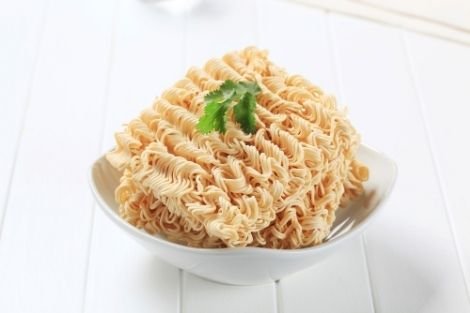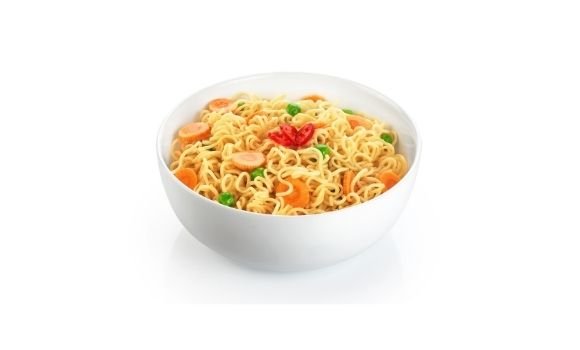1. The Food Additives of Cuboid Instant Noodles
THICKENER:
Thickeners play a role in strengthening and increasing the elasticity of instant noodles. They smooth the surface of the instant noodles and improve their flavor. Typical thickeners are guar gum, propylene glycol alginate (PGA), acetylated phosphate, and the like.
EMULSIFIER:
Emulsifiers can unify different ingredients and increase the toughness of instant noodles. Typical emulsifiers include soybean phospholipids, sodium carboxymethyl cellulose (CMC), and the like.
ACIDITY REGULATOR:
Acidity regulators can adjust the pH value of food, improve quality, and indirectly improve the taste and ductility of instant noodles. Typical acidity regulators are sodium carbonate, potassium carbonate, and the like.
ANTI-CAKING AGENT AND MOISTURE RETENTION AGENT:
It should be noted that a food additive does not necessarily serve only one purpose. For example, sodium hexametaphosphate (SHMP), sodium tripolyphosphate (STP), tetrasodium pyrophosphate (TSPP), and the like, are used as anticaking agents and, at the same time, moisture retention agents. The anti-caking agent allows the cuboid instant noodles to be kept in a loose structure so that the cuboid instant noodles can absorb water more quickly. The water retention agent can increase the water absorption of the instant noodles, make the instant noodles appear white and attractive, and make the instant noodles stronger and more elastic.
ANTIOXIDANTS:
Most cuboid instant noodles are fried, and long-term storage can easily cause the cuboid instant noodles to oxidize and deteriorate To solve this problem, antioxidants can inhibit the oxidative deterioration of oil and effectively prolong the shelf life of the cuboid instant noodles. Typical antioxidants include vitamin E, butylated hydroxyanisole (BHA), butylated hydroxytoluene (BHT), tertiary butylhydroquinone (TBHQ), and so on.

[Related: What is Methyl Cellulose (E461)?]
2. The Food Additives in the Seasoning Ingredient Package of the Instant Noodles
FLAVOR ENHANCER:
The flavor enhancer can supplement or enhance the flavor of the original substance in the food it is added to. Typical flavor enhancers are disodium succinate (WSA), monosodium glutamate (MSG), disodium 5′-ribonucleotides and so on.
COLORANT:
Coloring agents can impart and improve the color of food to enhance appetite. This is why the instant noodles sauce looks so “delicious”. Typical colorants are carmine, riboflavin, gardenia yellow colorant, capsicum red colorant, turmeric yellow colorant, curcumin and so on.
ANTIOXIDANTS:
Of course, the seasoning oil package is an indispensable part of the instant noodles. Among them, tea polyphenols and vitamin E are used as antioxidants, which can effectively extend the shelf life of the seasoning oil package.
[Related: What Is Carboxymethyl Cellulose (CMC)?]









